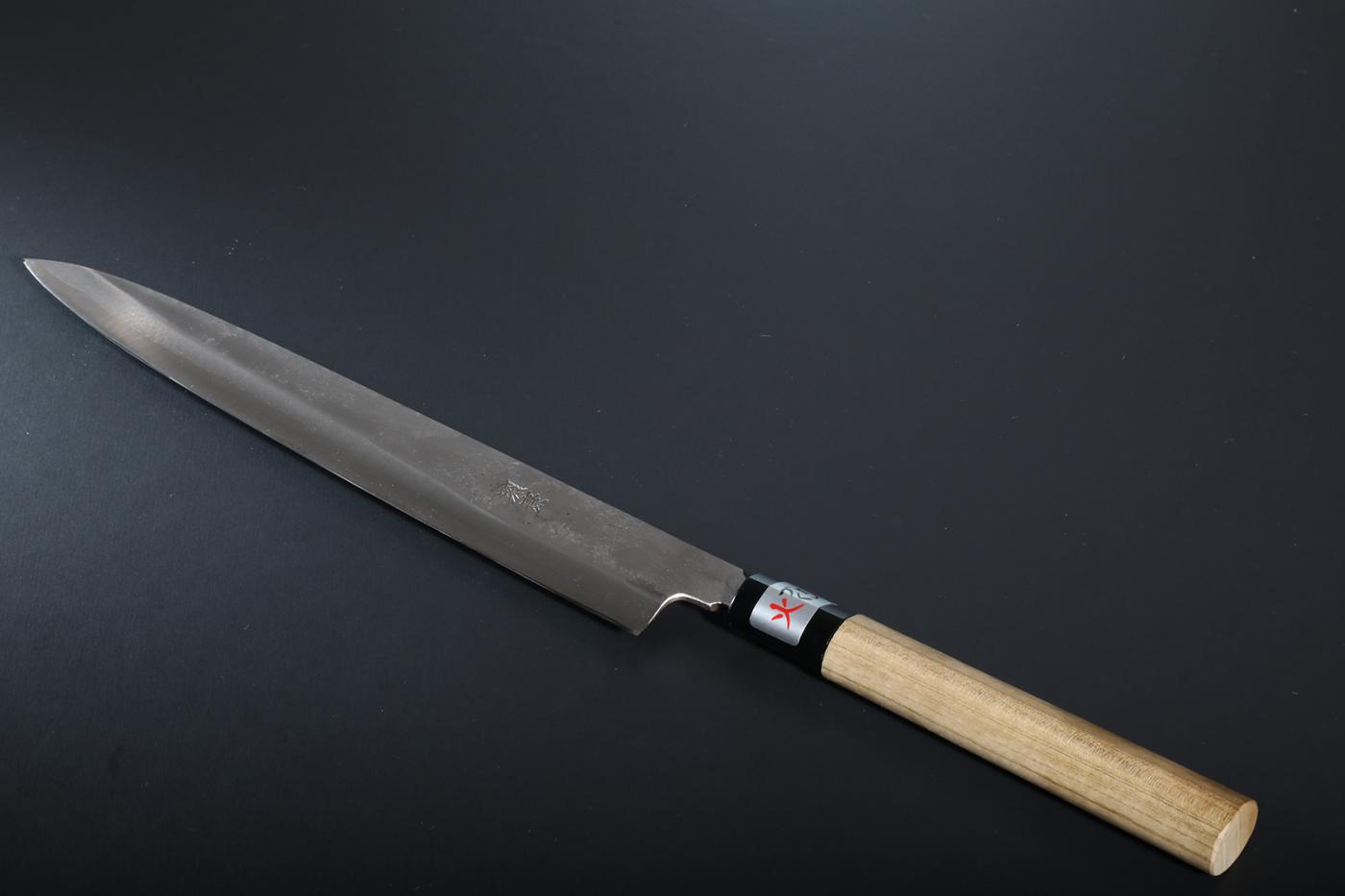
Often used for gutting and descaling, in sushi preparation its use is mostly as a filleting knife: removing heads and separating the fillet ready for slicing. Translating as ‘pointed carving knife’, the deba is a sharp, heavy-duty knife used for both fish and meat. There’s no ‘sawing’ involved and very little pressure exerted on the fish, which means glossy, smooth and un-bruised slices. The length and sharpness of the knife means that fish can be sliced (to best highlight its texture) in one single movement with very little force. Translating as ‘willow blade’, the yanagi is sometimes called shobu-bochu (sashimi knife) and is a long, thin knife used for cutting sashimi-grade raw fish.

So here I will tell you a little bit about the main three, the yanagi ba, deba and usuba. Maybe this lighter knife leads to more dexterous, delicate use… who can tell?Īs I mentioned above, there are a world of different Japanese knives: different knives for fish, meat and vegetables, different knives for highlighting specific parts of the fish and even different knives from different regions of Japan. Because it’s so brittle, it’s important that the right knife is used for the right job, meaning that quite a few knives are needed and they need to be taken good care of.Īnother difference is that Western knives tend to be designed for pushing and cutting (away from the body), whereas Japanese knives tend to be designed for pulling and cutting (towards the body).Īs Japanese knives are made of harder steel than Western knives, the blades tend to be thinner. The con is a more brittle knife, which rusts easily.
Sashimi knife pro#
The pro of this harder steel choice is a sharper, stronger knife that needs to be sharpened less frequently. Japanese knives tend to be made of a high-carbon steel hybrid, rather than stainless steel. The other side often has a hollow in the back, which helps stop the food sticking to the knife.

The main difference between Japanese and Western knives, is the fact that a Japanese knife is single bevelled: it’s only sharpened on one side. So, I thought I’d dedicate this blog post to writing an introduction to sushi and sashimi knives. There are many to choose from because the Japanese are fastidious about knives, and so am I!

Little did she know what she was letting herself in for by asking me: before we could even begin to talk about brands, I needed to understand what she wanted the knife for. She had heard that Japanese knives were really well made, so she wanted my opinion on which brand to go for. A few days ago, a friend asked me which kitchen knife she should buy.


 0 kommentar(er)
0 kommentar(er)
